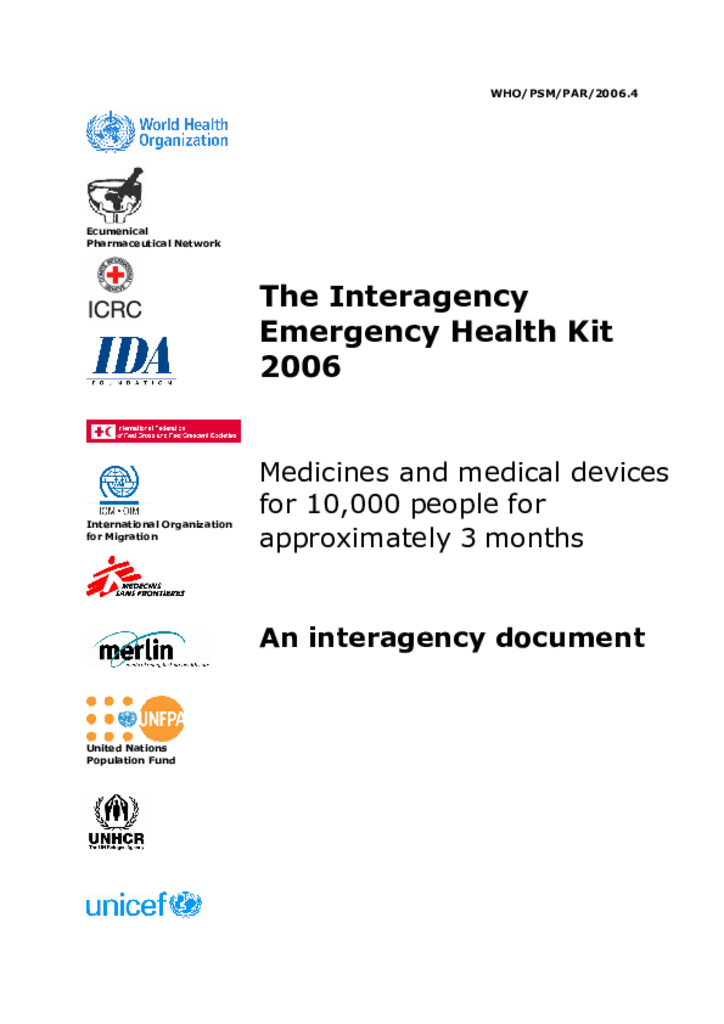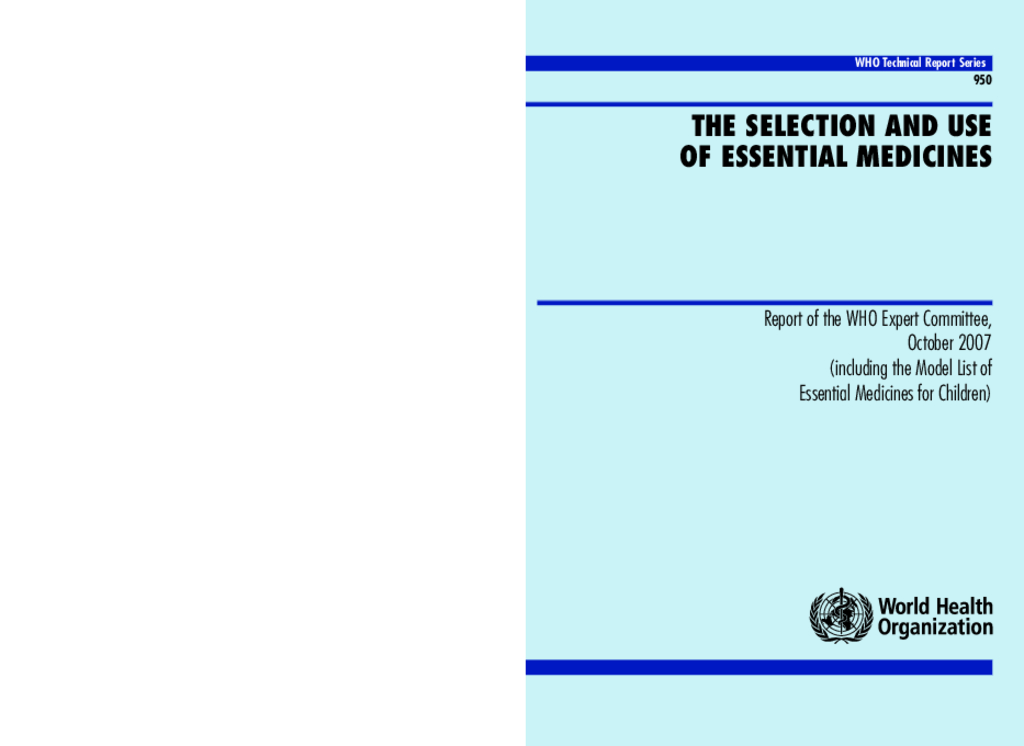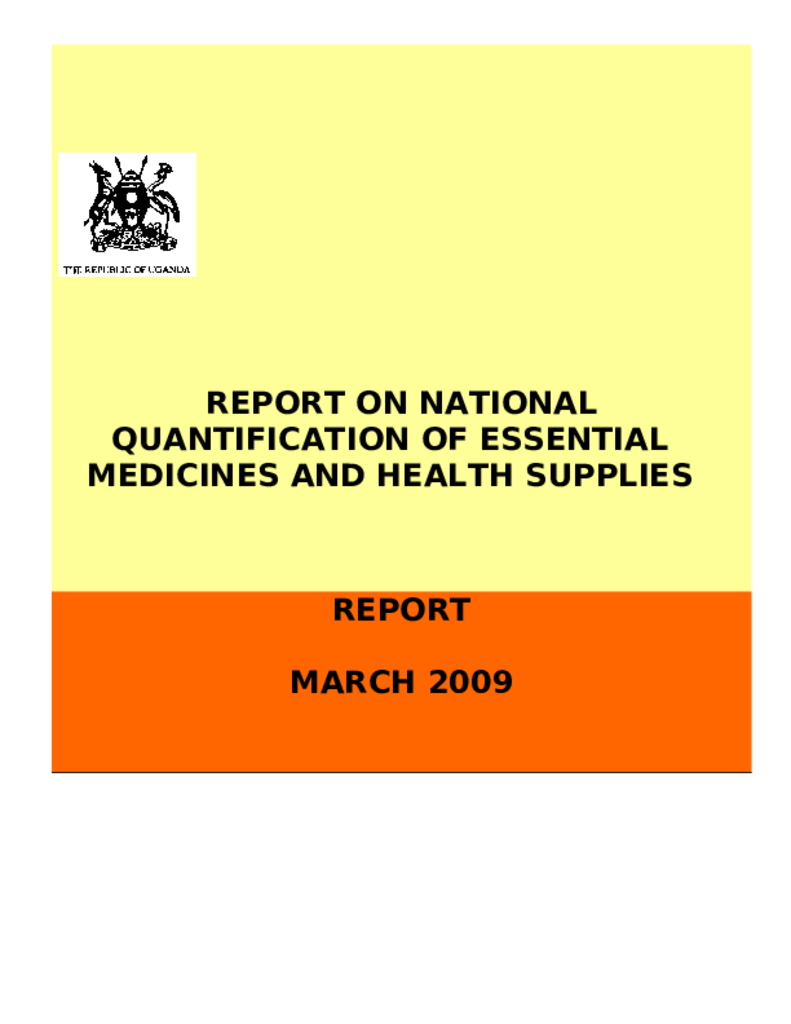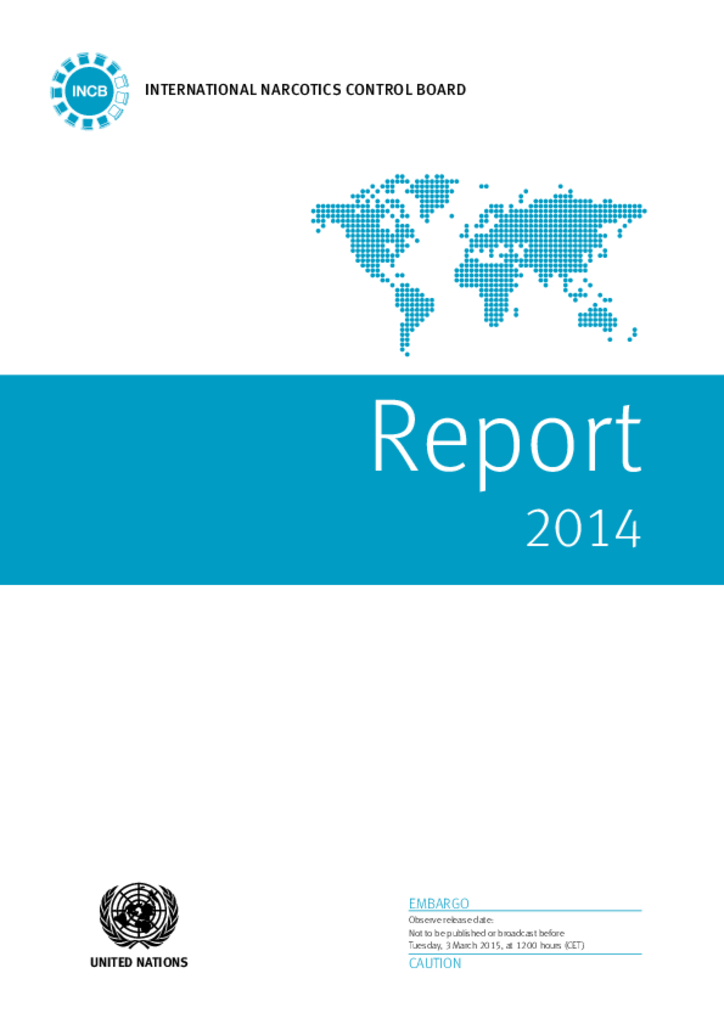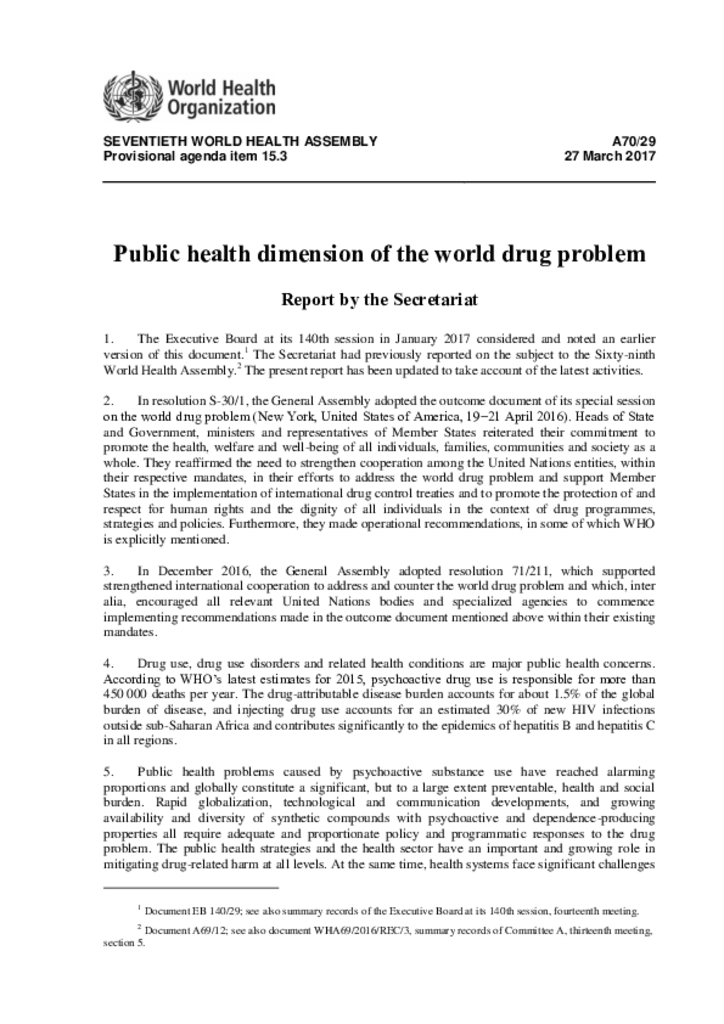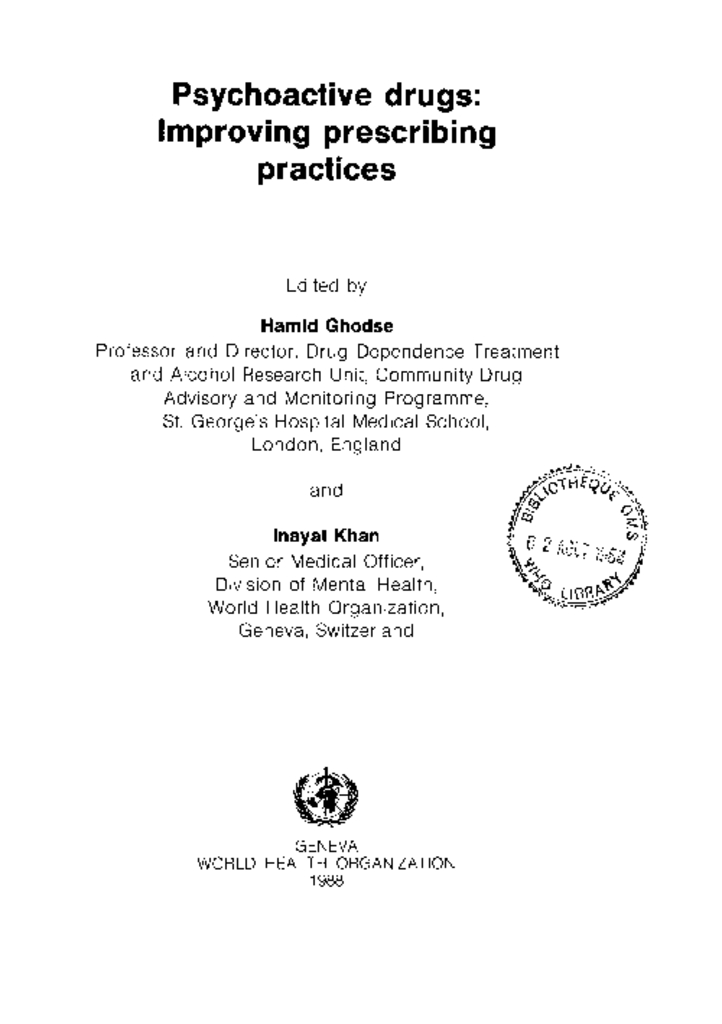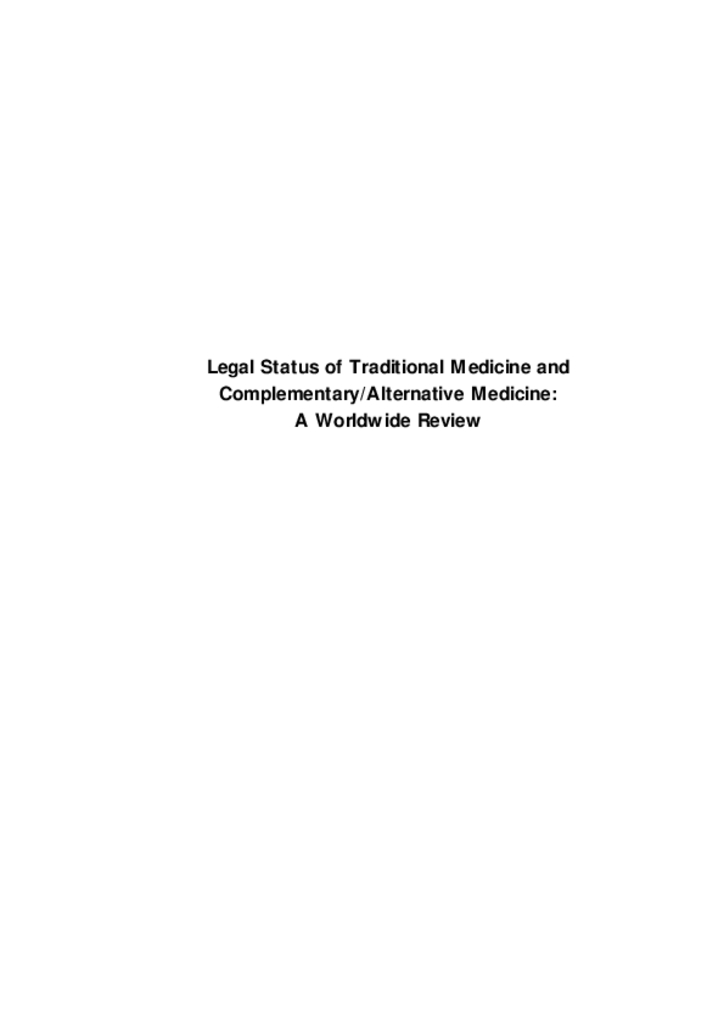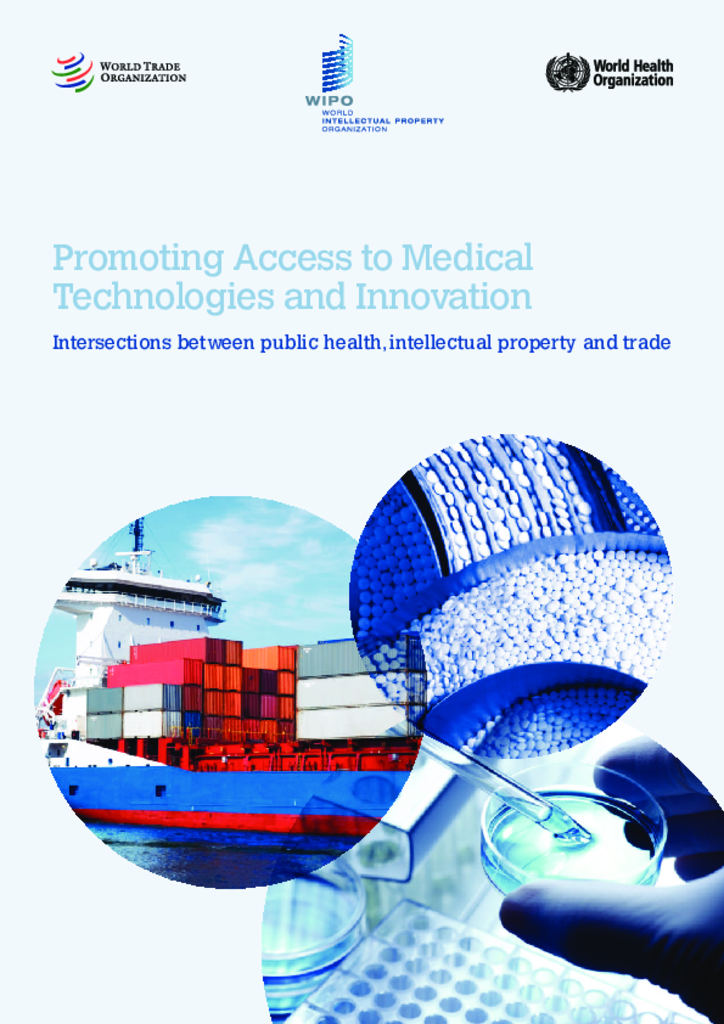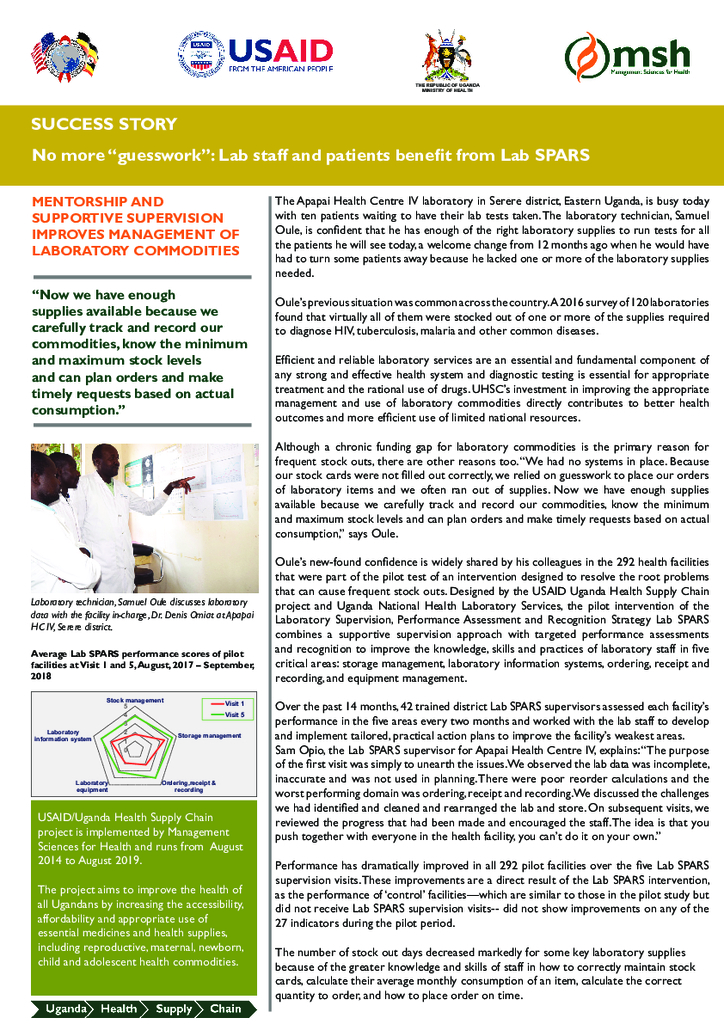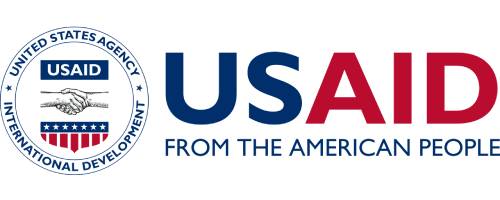The organizations and agencies of the United Nations system and international and nongovernmental organizations are called upon to respond to an increasing number of largescale emergencies and disasters, many of which pose a serious threat to health. Much of the assistance provided in such situations is in the form of medicines and medical devices (renewable and equipment
The WHO Expert Committee on the Selection and Use of Essential Medicines met in Geneva from 24 to 25 October 2007. The meeting was opened on behalf of the Director-General by Dr Howard Zucker, Assistant Director-General for Health Technology and Pharmaceuticals. He welcomed participants to the meeting, noting that it was an extra meeting of the Expert Committee that coincided with the 30th anniversary of the fi rst Expert Committee and Model List of Essential Medicines. On this occasion the meeting had been convened to review the fi ndings of the Subcommittee meeting held in July
The April 2007 Technical review meeting (4th MOH TRM) noted that whereas there were positive steps taken to improve on overall management of Essential Medicines and Health Supplies (EMHS), stock outs of essential medicines were still common. This was mainly attributed to under funding but the actual gap was not known. The pharmacy division was then charged with the responsibility of carrying out national quantification of EMHS so
Given its multifaceted and dynamic nature, the world drug problem is one of the most complex challenges facing the contemporary world. It directly or indirectly affects everyone and poses a serious threat to health, both as a result of the illicit cultivation, production, manufacture, sale, demand, trafficking and distribution of narcotic drugs and psychotropic substances, and as a consequence of the abuse of prescription drugs.
Drug use, drug use disorders and related health conditions are major public health concerns. According to WHO’s latest estimates for 2015, psychoactive drug use is responsible for more than 450 000 deaths per year. The drug-attributable disease burden accounts for about 1.5% of the global burden of disease, and injecting drug use accounts for an estimated 30% of new HIV infections outside sub-Saharan Africa and contributes significantly to the epidemics of hepatitis B and hepatitis C in all regions.
The schedue provides for control of 98 psychotropical substances which are assigned to one of the four schedues.
In summary, these recommendations are a response to the unquestionable dangers of exposure to SHS, as well as to the opportunity to assist the WHO FCTC implementation process and provide guidance to the growing number of jurisdictions interested in becoming smoke-free.
In this document, medical providers and practices are generally described as traditional, complementary/alternative, or allopathic. “Provider” and “practitioner” are used interchangeably. In a few cases, particularly in the European section, the cumbersome term “non-allopathic physician” is used to refer to medical practitioners who are either not allopathic practitioners or who are allopathic providers but not physicians.
This study follows on from the 2002 study entitled WTO Agreements and Public Health: A Joint Study by the WHO and the WTO Secretariat. This earlier study examined the linkages between trade and health policies in general to enable trade officials and health officials to better understand and monitor the effects of their work on each other’s areas of responsibility. This new study updates the material on IP and other trade aspects as they relate to
innovation of, and access to, medical technologies, the areas which have seen most change in the decade since then. The 2002 study remains a useful resource on many issues, such as health services, infectious disease control, food safety and tobacco.
The Apapai Health Centre IV laboratory in Serere district, Eastern Uganda, is busy today with ten patients waiting to have their lab tests taken. The laboratory technician, Samuel Oule, is confident that he has enough of the right laboratory supplies to run tests for all the patients he will see today, a welcome change from 12 months ago when he would have had to turn some patients away because he lacked one or more of the laboratory supplies needed.
Five billion people lack access to safe, affordable, and timely surgical and anesthesia care. Significant challenges remain in the provision of surgical care in low-resource settings. Uganda is no exception.
This manual is intended to guide the coordinated implementation of regular, systematic, large-scale interventions that provide anthelminthic drug treatment as a core component of the joint and synergic control of helminthic diseases such as lymphatic filariasis, onchocerciasis, schistosomiasis and soil-transmitted helminthiasis. While it is a general document, intended to be applicable in all epidemiological situations, it is specific in that it deals only with drugs and their coordinated use: it does not cover any of the other important public health interventions – health education, sanitation, safe water supply, vector control, etc. – needed to ensure sustained reduction in transmission, and then elimination, of helminthiasis. It will be the responsibility of programme managers to adapt this manual to the prevailing regional, national and local context and the resources available, and to build the preventive chemotherapy component into more comprehensive control or elimination strategies already in place or planned for the future.
